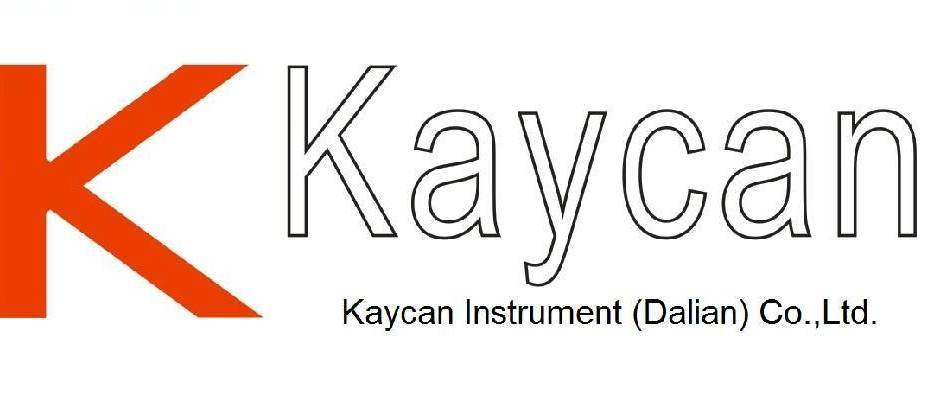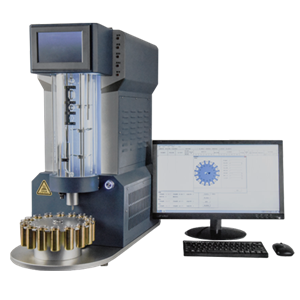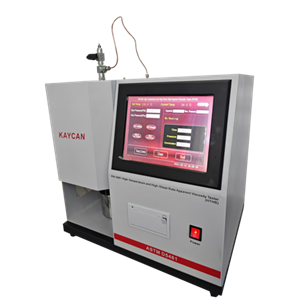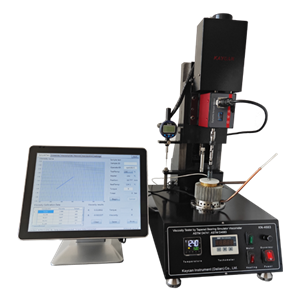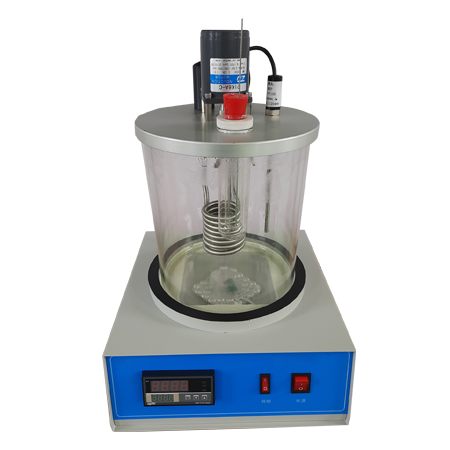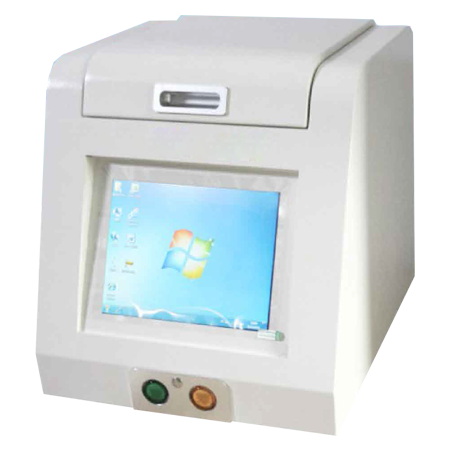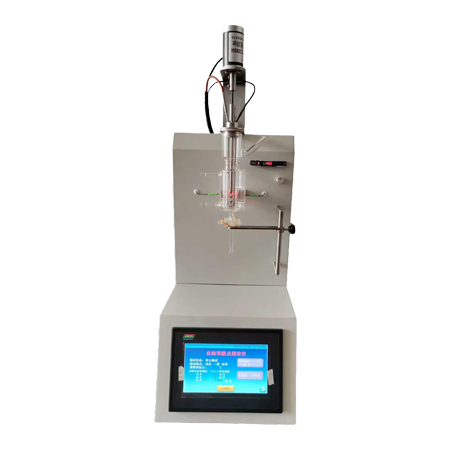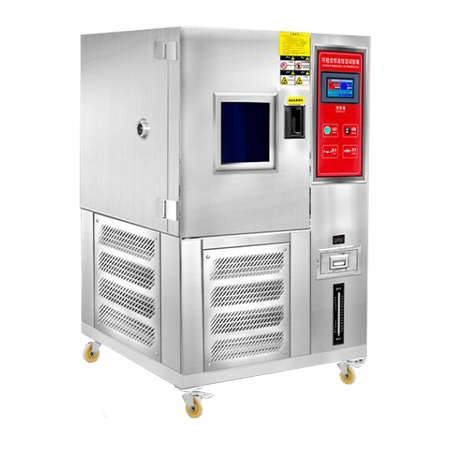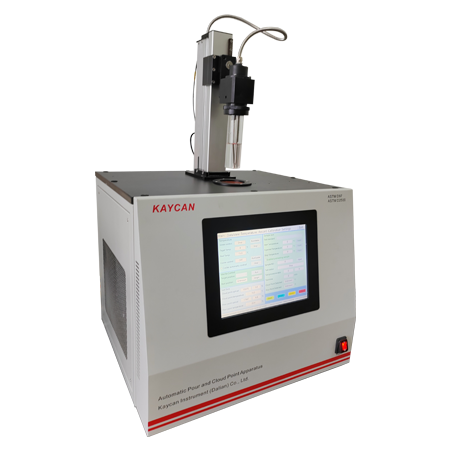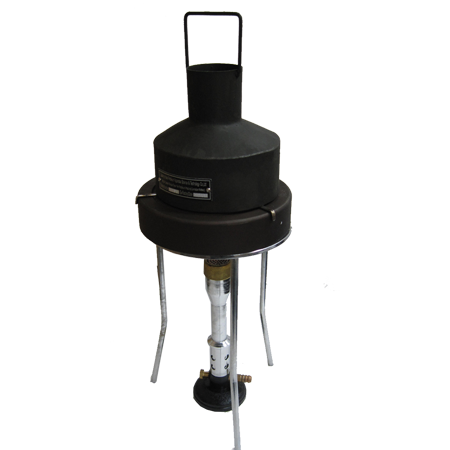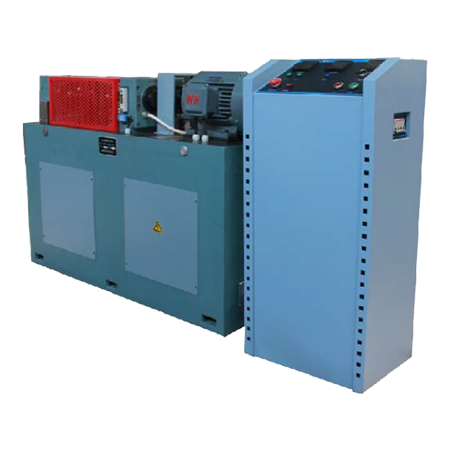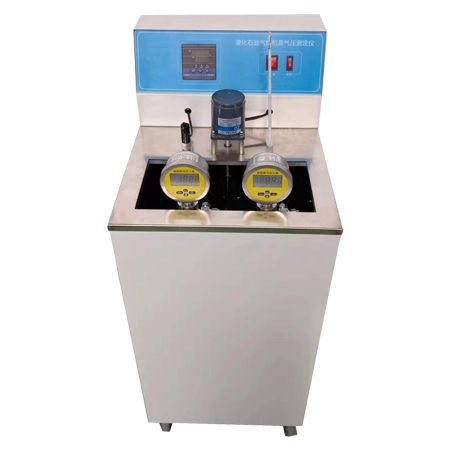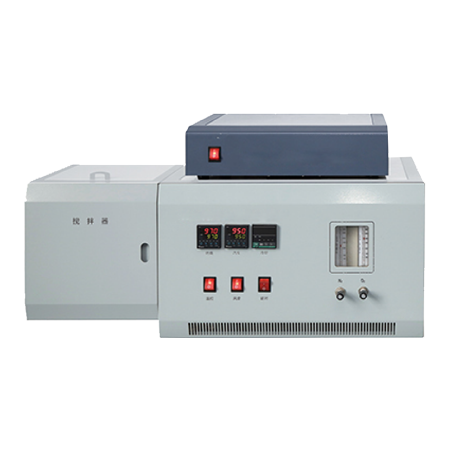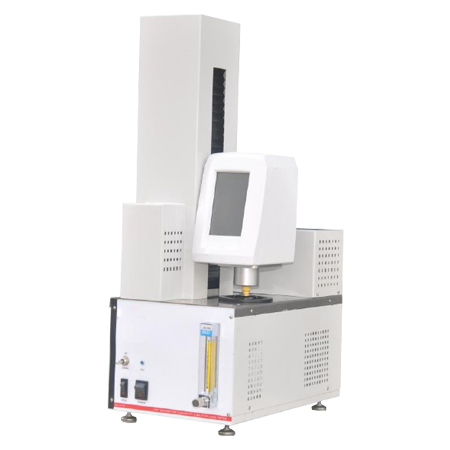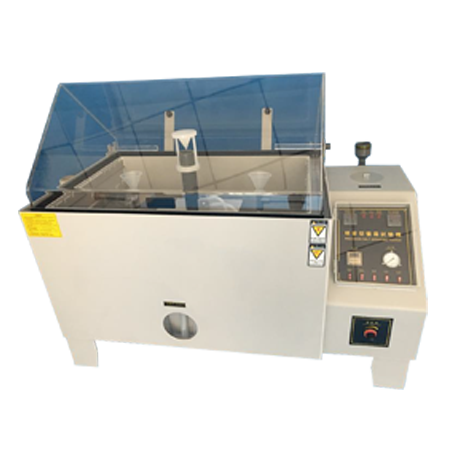-
ASTM D611 Manual Aniline Point And Mixed Aniline Point Round type
The aniline point (or mixed aniline point) is useful as an aid in the characterization of pure hydrocarbons and in the analysis of hydrocarbon mixtures
Send Email Details -
ASTM D6481 Portable Energy Dissipation X-ray Fluorescence Spectrometer
KN-6481 Portable Energy Dissipation X-ray Fluorescence Spectrometer conforms to ASTM D6481 Standard Test Method for Determination of Phosphorus, Sulfur, Calcium, and Zinc in Lubrication Oils by Energy Dispersive X-ray Fluorescence Spectroscopy and ASTM D7751 Standard Test Method for Determination of Additive Elements in Lubricating Oils by EDXRF Analysis. This tester is used to test metal elements in oils like P, S, Cl, Ca, Ti, V, Cr, Mn, Fe, Ni, Cu Zn, PB, Mo, Ag, Cd, Sn, etc.
Send Email Details -
ASTM D611 Automatic Aniline Point And Mixed Aniline Point
The aniline point (or mixed aniline point) is useful as an aid in the characterization of pure hydrocarbons and in the analysis of hydrocarbon mixtures.
Send Email Details -
KN-40A Channel Point Tester for Gear Oil
KN-40A Channel Point Tester for Gear Oil conforms to FTMS-791B-3465.1 and SH/T 0030. It is used for determination of channel point of gear oil at low temperature. The test consists of storing an Oil sample for 18 hours at a low temperature, cutting a channel in the lubricants with a metal strip and determining whether the lubricants flow together to covet the bottom of the container within 10 seconds.
Send Email Details -
Full Automatic Pour and Cloud Point Tester
KN-9725 Automatic Pour and Cloud Point Tester developed for classic determination of cloud point (CP) and pour point (PP) of petroleum products according to ASTM D97, ASTM 2500, EN 23015, ISO 3015, ISO 3016, IP 15,. KN-9725 determines CP and PP in one test cycle with high precision in compare with manual methods. Unique integrated cooling system provides cooling of samples up to -80°С in a short time without any external chiller.
Send Email Details -
ASTM D189 Conradson Carbon Residue Tester
KN-189 Conradson Carbon Residue Tester conforms to ASTM D189 Standard Test Method for Conradson Carbon Residue of Petroleum Products. This apparatus covers the determination of the amount of carbon residue left after evaporation and pyrolysis of an oil, and is intended to provide some indication of relative coke-forming propensities. This test method is generally applicable to relatively nonvolatile petroleum products which partially decompose on distillation at atmospheric pressure, our KN-189 Provides an indication of relative coke forming properties of petroleum oils. The residue remaining after a specified period of evaporation and pyrolysis is calculated as a percentage of the original sample.
Send Email Details -
Metal Bath Pour and Cloud Point Tester
KN-97J Metal Bath Pour and Cloud Point Tester is suitable to the standards of ASTM D97 Standard Test Method for Pour Point of Petroleum Products and ASTM D2500 Standard Test Method for Cloud Point of Petroleum Products, It is used to test the pour and cloud point of petroleum products.
Send Email Details -
Relative Scuffing Load Carrying Capacity Tester, FZG
KN-FZG Relative Scuffing Load Carrying Capacity Tester conforms to ISO 14635-1 Gears – FZG test procedures—Part 1: FZG test method A/8, 3/90 for relative scuffing load-carrying capacity of oils and ISO 14635-2 – FZG test method A10/16,6R/90 for relative scuffing load-carrying capacity of lubricants with high EP performance. The types of gear failures which may be influenced by the lubricant in use are scuffing, low-speed wear and the gear-surface fatigue phenomena known as micropitting and pitting. In the gear design process, these gear damages are taken into consideration by the use of specific lubricant and service-related characteristic values. For an accurate, field-related selection of these values, adequate lubricant test procedures are required. The FZG test procedures described in this and other parts of ISO 14635 can be regarded as tools for the determination of the lubricant-related characteristic values to be introduced into the load-carrying capacity calculation of gears.
Send Email Details -
Reid Vapor Pressure Bath
KN-323 Reid Vapor Pressure Bath conforms to ASTM D323 Standard Test Method for Vapor Pressure of Petroleum Products (Reid Method). It used for testing the vapor pressure (Because the external atmospheric pressure is counteracted by the atmospheric pressure initially present in the vapor chamber, the Reid vapor pressure is an absolute pressure at 37.8°C (100°F) in kilopascals (pounds-force per square inch)
Send Email Details -
Sulfur and Chlorine Microcoulometric Titrator
Injected into quartz tube and mixed with O2, the sample burns .Then the combustion gases are routed into a titration cell and react with I3- or Ag+ . Then the analyzer detects and adds I3- or Ag+ to original concentration. In accordance with Faraday's laws of electrolysis, the detector module calculates energy they consumed and thus gets the concentration of sulfur or chlorine.
Send Email Details -
Gel Index Tester (LTLS)
KN-5133 Gel Index Tester (LTLS) conforms to ASTM D5133 Standard Test Method for Low Temperature, Low Shear Rate, Viscosity/Temperature Dependence of Lubricating Oils Using a Temperature Scanning Technique. This test method covers the measurement of the apparent viscosity of engine oil at low temperatures and ASTM D7110 Standard Test Method for Determining the Viscosity-Temperature Relationship of Used and Soot-Containing Engine Oils at Low Temperature. This Test method covers how to measure the apparent viscosity of used and soot-containing engine oils at low temperature.
Send Email Details -
ASTM B117 Salt Spray Apparatus
Brief introduction to structural design The salt spray test box has the advantages of beautiful appearance, reasonable structure, smooth and smooth lines. The shell adopts high quality flame retardant PP plastic board, durable temperature greater than 85 DEG C, between the board and the board of the joint by planing and milling after a 90 degree angle, then using the high temperature molten plastic welding torch welding wire fill, after cooling solid weld, the whole body of the joint box formation, compact structure, glossy appearance, various auxiliary the same accessories for corrosion resistant material production.
Send Email Details
